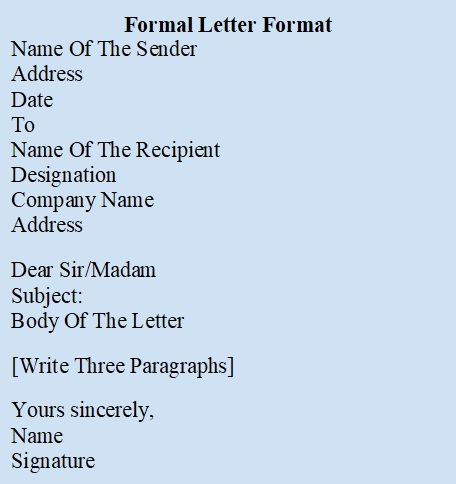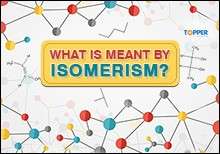A Comprehensive Guide on Formal Letters

Get a comprehensive guide here to enable you to write formal letters.
By Topperlearning Expert 28th Mar, 2022 | 10:59 am
ShareAre you planning to write a formal letter but don't know how to frame it? Then, relax! This guide will inform you about everything starting from the formal letter format to the formal letter sample. Besides, you will also learn about the different parts of a formal letter and how it is different from informal letters. So, keep reading, and by the end of the article, you will draft the perfect formal letter to share with the recipient.
Definition Of Formal Letters
A formal letter is a kind of letter used to express gratitude or dissatisfaction with a person or circumstance that is usually an official. The formal letter follows a specific format and comes in various forms. You can use a formal letter in various places such as universities, schools, workplaces, and government buildings.
The formal letter in English is constructed in a clear, straightforward, concise, fascinating, and simple to comprehend form. As you read further, you will get familiar with different formal letter types, parts, and structures in great depth.
Format Of Formal Letters
No matter what the formal letter's content is, always be polite and aware of your language while writing a professional formal letter. There are a few things to keep in mind when drafting a letter. Follow these steps, and you will understand the correct format of a formal letter.
1. Start the letter with the sender's address. It is the most important part of a formal letter format.
2. Next, write the date below the sender's address.
3. Now write the receiver address. The receiver can either be a person or the name of a firm or an organization.
4. Now write the subject of the letter. It will help if you mention the purpose of the formal letter before elaborating on it.
5. Dear Sir/Madam, can be used as a salutation. If you know someone you know personally, you can approach them as 'Dear XYZ.'
6. The formal letter's body can be divided into three paragraphs:
● The opening paragraph should introduce yourself and a statement of the letter's objective.
● The second paragraph should contain all of the pertinent information.
● The third paragraph can serve as a wrap-up piece in which you state your expectations for the situation.
7. To end the formal letter, you can use a complimenting closure like 'Yours faithfully,' 'Yours sincerely,' etc. Check out the formal letter example below to know how you can write it.
8. In contrast to informal letters, your signature must include your name and title beneath it.
You can check the format for formal letters in English to have a better idea.
Parts Of Formal Letters
Now, let's study the parts of a formal email format in detail. If you are drafting a mail-in English language, follow this formal letter writing format in English.
Sender's Address
The sender's address is normally seen on the top right side of the page. If the letter's receiver intends to contact the sender for future communication, the address should be accurate and complete.
Date
The sender's address is preceded by the date on the right of the page, just below it in the English format of a formal letter. It's crucial for formal letters because they're frequently kept on file.
Receiver's Address
The receiver's address is printed on the left of the page after leaving some space. Whether or not to put "To" above address is a personal decision. As the first line of the address, make sure to write the receiver's formal time and designation, etc.
Greeting
Here, you welcome the person to whom you're writing. Remember that this is a formal letter, so the salutation should be respectful and not overly personal. For example, "Sir" or "Madam" are common salutations of informal correspondence. You can also use "Mr. XYZ" or "Ms. ABC" as a salutation if you know the person's name. But keep in mind that you can't just call them by their first name. It has to be their full name or their last name.
Subject
The subject of the formal letter follows the salutation or greeting in the formal letter format. Write "Subject" in the middle of the line, preceded by a colon. The goal of writing the formal letter is then summarised in one line. It allows the recipient to focus on the letter's topic in a single glance.
Body Of The Letter
The formal letter body is where you write the main message. If the letter is longer, it is split into three paragraphs; if it is shorter, it is split into two paragraphs. You should state the letter's purpose clearly in the first paragraph of the formal email format. The content should be professional in tone. Please refrain from using flowery words. Another thing to remember is that the letter should be short and to the point. And, no matter what the subject of your letter is, always be nice and respectful in your language.
Closing The Letter
Write a complimentary remark at the ending of your formal email format. On the right of the page, the words "Yours Faithfully" or "Yours Sincerely" are printed. If you know the person's name, use the latter.
Signature
Finally, sign your name after closing the letter. Then, beneath the signature, put your name in block letters. The recipient will tell who is mailing the letter because of this. It is the final part of a formal letter format.
You can look at a formal letter sample from online sites to better understand the structure.

Types Of Formal Letters
There are various forms of formal letters, classified as follows:
● Business Letters
● Application Letters
● Newspapers Letters
● Letter Of Inquiry
● Offer Letter
➔ Business Letters
Business letters should be short, straightforward, and goal-oriented. There is no space for a story in a business formal letter format. Letters from employers to employees and vice versa, emails to order and replace items, letters of significant concern to a higher-ranking officer, letters of complaint, and so on are examples of formal or business letters.
➔ Letters Of Application
Letters of Application are letters written to apply for a job. It begins with a brief statement of whether the candidate is writing to a referral from an internet or newspaper advertisement. It will help if you write the letters of application in a formal or business letter manner. You can check out a formal letter example from online websites to understand how to draft an application letter.
➔ Letters To Newspapers
Always address these emails to 'The Editor,' sign them off with 'Yours faithfully. Editorials are letters written to the editor in which the writer expresses a concern that an editor should resolve. The formal letter format should be written in a professional and genuine tone. Because no newspaper will print anonymous letters, make sure you're writing for a good cause and include your full name and address.
➔ Letter Of Inquiry
These letters collect information, just as their name implies. For example, this letter is used to obtain information or knowledge about a certain academic or professional course, a job inquiry, the costs of various services, the cost of items, terms and conditions, or operating agreements, and so on.
➔ Order Letter
An order letter is a letter used to place a purchase order. The following are the three key elements of the order letter, which the customer writes.
- The ordered items' or products' features and specifications must be mentioned explicitly.
- The product quantity, as well as the model number and other pertinent information, must be specified.
- The delivery information for the products must be presented precisely and unambiguously.
Difference Between Formal And Informal Letter
|
Formal Letter |
Informal Letter |
|
Professional Language |
Casual Language |
|
Official Announcement |
Non-Official Announcement |
|
English format of formal letter |
No Format |
|
Drafted for official reasons |
Drafted for personal reasons |
FAQs On Formal Letters
Q1. Define a resignation letter?
Ans: A resignation letter that an employee writes to the company owner before quitting the job.
Q2. What are the criteria to check while writing a formal letter?
Ans: There are three things to check while writing a formal letter in English. The introduction, body and conclusion. Besides, check that the letter's tone is professional and not conversational.
Q3. What can I use to give closure to a formal letter?
Ans: You can close the letter by writing phrases like 'Yours sincerely', 'With sincere thanks', 'With sincere appreciation, 'Yours faithfully', 'Yours truly, etc.
Formal Letter Format
Name Of The Sender
Address
Date
To
Name Of The Recipient
Designation
Company Name
Address
Dear Sir/Madam
Subject:
Body Of The Letter
[Write Three Paragraphs]
Yours sincerely,
Name
Signatu
Important Resources
- Education Franchisee opportunity
- NCERT Solution
- CBSE Class 9 Mathematics
- NCERT Solutions for class 10 Science
- Sample Papers
- CBSE Class 9 Science
- NCERT Solutions for class 10 Maths
- Revision Notes
- CBSE Class 10 Hindi
- CBSE Class 10 English
- CBSE Class 10 English
- CBSE Class 10 Social Studies
- CBSE Class 10 Science
- CBSE Class 10 Mathematics
- Career In Science After 10
- Career In Commerce After 10
- Career In Humanities/Arts After 10
- NCERT Solutions for Class 10
- NCERT Solutions for Class 11
- Business Studies Class 12 CBSE project





